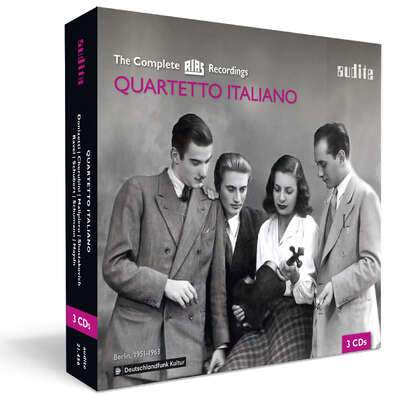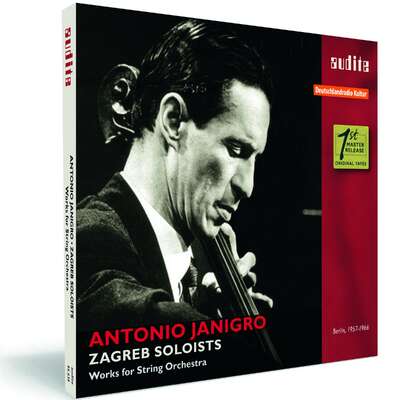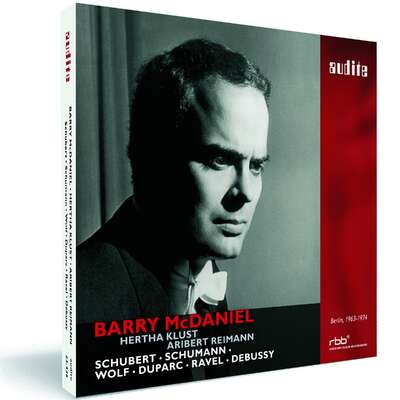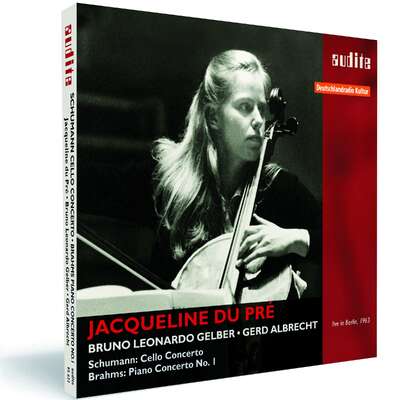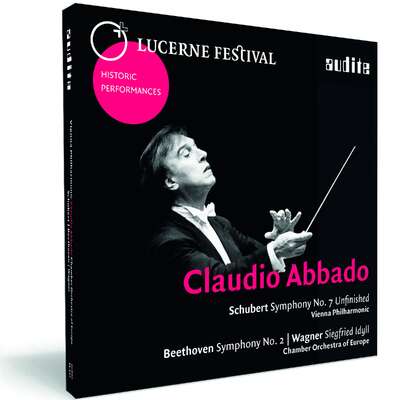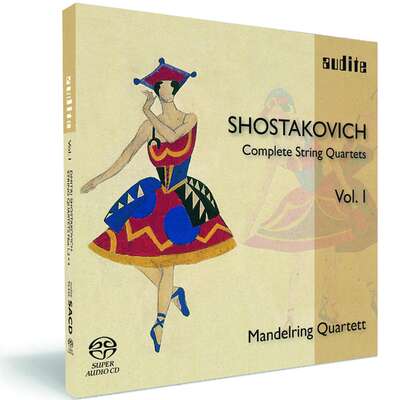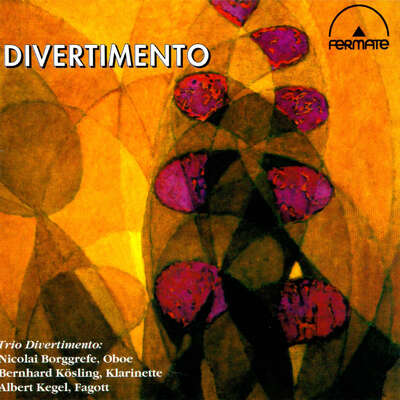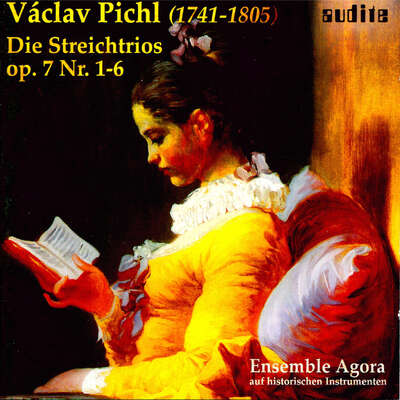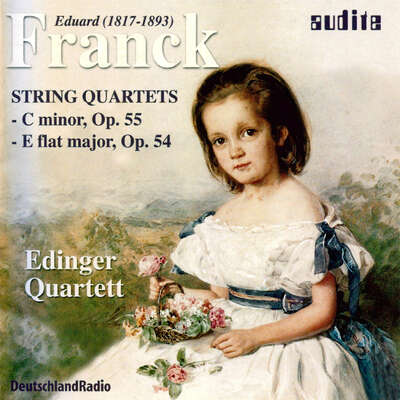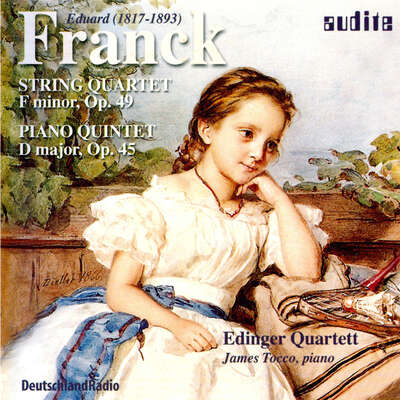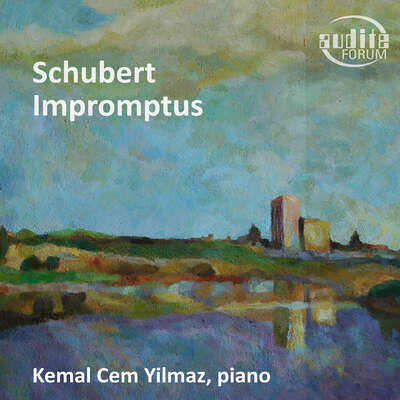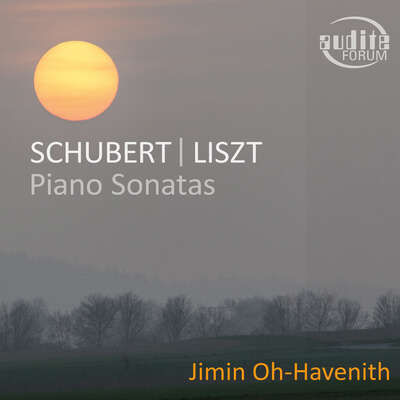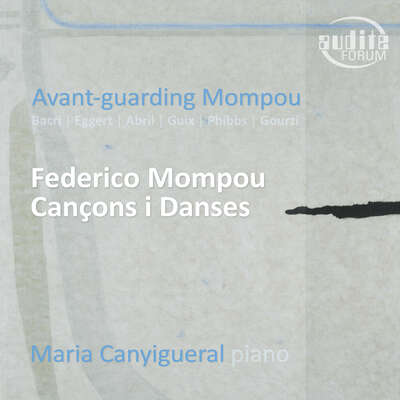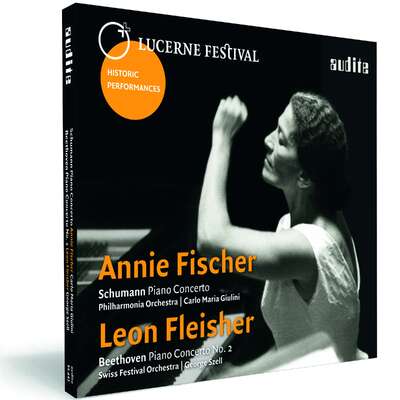
Auto-Rip
Das Quartetto Italiano, Pionier der italienischen Kammermusikkultur, zählte zu den führenden Streichquartetten des 20. Jh. Die vollständigen RIAS-Rundfunkproduktionen, hier erstmals veröffentlicht, belegen die Ausnahmestellung des Ensembles, die außergewöhnliche Homogenität des Quartettklangs und die enorme Repertoirebreite.mehr
Das Quartetto Italiano, Pionier der italienischen Kammermusikkultur, zählte zu den führenden Streichquartetten des 20. Jh. Die vollständigen RIAS-Rundfunkproduktionen, hier erstmals veröffentlicht, belegen die Ausnahmestellung des Ensembles, die außergewöhnliche Homogenität des Quartettklangs und die enorme Repertoirebreite.
Titelliste
Details
| Quartetto Italiano - The complete RIAS Recordings | |
| Artikelnummer: | 21.456 |
|---|---|
| EAN-Code: | 4022143214560 |
| Preisgruppe: | CL |
| Veröffentlichungsdatum: | 5. April 2019 |
| Spielzeit: | 212 min. |
Zusatzmaterial
- Digibooklet
-
21456 Producer's comment
unmittelbare Eindrücke des Produzenten Ludger Böckenhoff
Informationen
Quartetto Italiano
Der selbstbewusst gewählte Ensemblename stellte von Beginn an unmissverständlich klar, dass das Quartetto Italiano sich nicht nur als ein italienisches Streichquartett unter mehreren verstand, sondern als das eine, maßgebliche. Bald schon war das Ensemble als Pionier italienischer Kammermusikkultur nach dem Zweiten Weltkrieg anerkannt. Durch unermüdliche Detailbesessenheit, intensive Erkundung des musikalischen Ausdrucksgehaltes der Werke und außergewöhnliche Homogenität des Quartettklangs eroberte sich das Quartetto Italiano in den ersten beiden Dekaden seiner Karriere einen festen Platz in der Oberliga der führenden Streichquartette.
Die Erstveröffentlichung sämtlicher Produktionen, die das Quartetto Italiano für den Berliner RIAS zwischen 1951 und 1963 realisierte, beleuchtet u.a. zwei Aspekte, die die Musiker in ihrer späteren Aufnahmetätigkeit zunehmend vernachlässigten: zum einen die Konzentration auf die Musik ihrer Landsleute, hier repräsentiert durch selten gehörte Werke von Gaetano Donizetti, Luigi Cherubini und Gian Francesco Malipiero; zum anderen die enorme Bandbreite des Repertoires, das von Joseph Haydn, dem Vater des klassischen Streichquartetts, bis hin zu Dmitri Schostakowitschs (zum Zeitpunkt der Einspielung brandneuem) siebten Streichquartett reicht. Drei Werke der Veröffentlichung (Cherubini, Donizetti und Schostakowitsch) sind zum ersten Mal in der Interpretation des Quartetto Italiano auf CD zu erleben.
Zu dieser Produktion gibt es wieder einen „Producer's Comment" vom Produzenten Ludger Böckenhoff unter https://www.audite.de/media/file/00/29/11/Producer-s-Comment.pdf
Die Produktion ist Teil unserer Reihe „Legendary Recordings" und tragt das Qualitätsmerkmal
„1st Master Release". Dieser Begriff steht für die außerordentliche Qualität der Archivproduktionen bei audite. Denn allen historischen audite-Veröffentlichungen liegen ausnahmslos die Originalbänder aus den Rundfunkarchiven zugrunde. In der Regel sind dies die ursprünglichen Analogbänder, die mit ihrer Bandgeschwindigkeit von bis zu 76 cm/Sek. auch nach heutigen Maßstäben erstaunlich hohe Qualität erreichen. Das Remastering - fachlich kompetent und sensibel angewandt - legt zudem bislang verborgene Details der Interpretationen frei. So ergibt sich ein Klangbild von überlegener Qualität. CD-Veröffentlichungen, denen private Mitschnitte von Rundfunksendungen zugrunde liegen, sind damit nicht zu vergleichen.
Besprechungen
Scherzo | 01.12.2019 | Enrique Pérez Adrián | 1. Dezember 2019
Los instrumentistas (Borciani, Pegreffi, Farulli y Rossi) [...] hacen gala de amplitud en la respiración, claridad instrumental, variedad dinámica y belleza sonora.Mehr lesen
Neue Musikzeitung | 12/2019 - 68. Jahrgang | Christoph Schlüren | 1. Dezember 2019 | Quelle: https://www.nmz....
Physisches für das Sammlerherz
Der persönliche Jahresrückblick der nmz-Phonokritiker. Von Herbig bis Vivanet. Tonträger-Bilanz 2019 von Christoph Schlüren
[...] nobelstes Quartettspiel auch in Raritäten von Donizetti und Malipiero.Mehr lesen
www.amazon.com | November 24, 2019 | 24. November 2019 | Quelle: https://www.amaz... Esecuzioni rare ed eccezionali del Quartetto Italiano
Esecuzioni eccezionali di uno dei più grandi Quartetti di tutti i tempi. Per il quartetto di Shostakovic, e per quelli di Donizetti e Cherubini siMehr lesen
www.ResMusica.com | Le 6 septembre 2019 | Michel Tibbaut | 6. September 2019 | Quelle: https://www.resm... Le Quartetto Italiano, naissance d’un ensemble d’exception
Les quatre musiciens du Quartetto Italiano n’ont pas cessé de travailler ensemble durant trente ans. Toutefois dès leurs débuts le résultat était déjà d’une cohésion parfaite et d’un équilibre infaillible, au jeu clair, nerveux et contrasté, aux accents énergiques, quel que soit le répertoire abordé. Ils ne se complaisent jamais dans l’effusion ni dans le pathétique, ce qui cependant n’empêche pas leurs interprétations de demeurer empreintes d’un sobre dramatisme ou d’une poésie prenante lorsque nécessaire. C’est ce dont témoigne cette réalisation Audite avec une évidence irréfutable, dans une restitution sonore irréprochable.Mehr lesen
Audiophile Audition | Aug 19, 2019 | Gary Lemco | 19. August 2019 | Quelle: https://www.auda...
[...] this music captures the “wanderer” in Schumann, that same impulse typical of the Romantics, among whom we must count our Quartetto Italiano, especially in this seminal collection from RIAS.Mehr lesen
Diapason | August 2019 | Jean-Michel Molkhou | 1. August 2019
La discographie officielle des ltaliano, rééditée sous différentes étiquettes (Philips pour l'essentiel, mais aussi Emi, Testament, Tahra), aMehr lesen
Le triple album augmente de plusieurs oeuvres nouvelles (Donizetti, Cherubini, Chostakovitch) le patrimoine discographique des ltaliano et nous le présente en ses jeunes années, avant la « période Philips ». Ils étaient déjà admirés pour leur sobriété, leur humilité et la pureté de leur classicisme. Leur Opus 77 n° 1 de Haydn, avec son poignant Adagio et son virtuose Presto final, est un modèle d'élégance. D'un raffinement sans égal chez Ravel comme dans Schumann, ils furent parmi les premiers à reconnaître le génie des premiers quatuors de Schubert; une vision à la fois grave et pleine de grâce du D 112 en témoigne ici.
Au choix de jouer par coeur, très original pour l'époque, s'ajoutait la volonté singulière de défendre un répertoire italien totalement méconnu, depuis quelques pages du XVIIe siècle jusqu'aux plus contemporaines. Un sens aigu du bel canto se joint aux accents de la déploration dans le Quatuor en fa mineur(1819) où Donizetti peint en quatre tableaux la maladie du marquis Terzi (un mécène), sa mort puis la Marcia lugubre qui le porte en terre.
Vingt ans avant la mémorable intégrale Cherubini des Melos pour DG, les ltaliano soulignaient l'intérêt du Quatuor en fa majeur, oeuvre tardive (1835) de caractère plus classique que romantique. On retrouvera les harmonies ravéliennes et le fin lyrisme du 4• de Malipiero, qu'ils jouèrent souvent et gravèrent pour Columbia dès 1955. Quant au 7• de Chostakovitch, leur unique témoignage dans la musique du maître soviétique, il captive autant par sa tension et son énergie que par sa rigueur obstinée. Précieux.
Gramophone | July 2019 | Rob Cowan | 1. Juli 2019
Claims of consistency on Heifetz’s behalf are more than matched by the invariable beauty of tone – and musical vision – that the QuartettoMehr lesen
Süddeutsche Zeitung | 24. Juni 2019 | Wolfgang Schreiber | 24. Juni 2019 | Quelle: https://www.sued...
Die Klassik-Kolumne
Neu auf CD
Mit den Aufnahmen beim Sender RIAS Berlin, 1951 bis 1963, konnte [das Quartetto Italiano] der Musikwelt zeigen, [...] dass sie kraftvoll, feinnervig und elegant die Quartettkunst zu steigern wussten.Mehr lesen
Musica | N . 307 - GIUGNO 2019 | Claudio Bolzan | 1. Juni 2019
Particolarmente meticolosa la cura dei dettagli, in un contesto nel quale ogni minimo particolare, ogni impercettibile sfumatura (timbrica e dinamica) sono messi al servizio di ogni edificio, offrendo così per ogni creazione un quadro d’insieme energico ed organico.Mehr lesen
www.musicweb-international.com | May 2019 | Jonathan Woolf | 27. Mai 2019 | Quelle: http://www.music...
This is the first time that the Quartetto Italiano’s complete RAIS broadcast recordings have been made available, direct from the master tapes madeMehr lesen
It’s evident that by the late 1950s their stature was sufficiently high for them to exhume older Italian quartets and to add them, however briefly, to their repertoire to supplement their more standard fare. The Donizetti Quartet No.7 is, in any case, rather closer to Schubert stylistically than to Beethoven and its clarity and refinement are alike fully projected by this most fastidious and beautifully textured of quartets. There’s no want of elegance and charm. Their crispness of articulation and unanimity of weight garland Cherubini’s F major quartet to great advantage. In this first disc the two-movement Malipiero comes as welcome grit, its tempestuous agilities and beauties opening into broad polyphony; bright, alive and flexible. The Quartetto Italiano must surely have welcomed the Ravelian hues of its second movement, which they play with great warmth.
It’s a real surprise, and of enormous benefit, to hear their very particular insight into the Shostakovich. It’s neither as vibrato-heavy as the Borodin nor as biting and acidic as the Taneyev; that, of course, was not the Italians’ tonal, timbral or expressive heritage. Instead they chart a rhythmically resilient, focused course playing the funereal Lento – the composer’s tribute to his late wife, Nina – with exemplary refinement. They recorded the Ravel commercially in Milan in 1959, the same year that they left behind this Berlin broadcast performance. Here it’s just as beautifully balanced and atmospheric, the control of narrative just as gripping. It offers a welcome respite from the Juilliard Quartet’s frost-bitten recording of it, which was made at almost the same time. Perhaps this broadcast performance of Schubert’s B flat major quartet is a touch slower than the studio inscription but there’s not much in it expressively, and the characterisation of the Menuetto is a real highlight; the terpsichorean wit, control of dynamics and pizzicati unforgettably alluring.
The final disc is given over to Schumann’s Second and Third Quartets, and Haydn’s Op.77/1. German critics of the time may not have always welcomed Schumann if the booklet notes are reflective of their views, but the Italians play both works with affection and a sure sense of direction. The F major is buoyant, deft in the slow movement, and sporting an insouciantly dispatched Scherzo. The A major is the more popular quartet but whilst the slow movement is sensitively voiced it is never mawkish. The Quartetto Italiano remains scrupulously elegant throughout. The Haydn is both rarefied and gallant; the briefest moments of insecurity in the Menuetto apart, everything goes beautifully.
The original tapes have been presented in the very best aural light, whether taped in the RIAS Funkhaus or in Siemensvilla, and the booklet notes and production standards exemplary. It’s difficult to think of a time during its distinguished existence when this quartet wasn’t at its peak and any chance to explore the hitherto unpublished elements of its repertoire should be relished. Time spent here is stimulating, rewarding and enriching.
www.pizzicato.lu | 25/05/2019 | Uwe Krusch | 25. Mai 2019 | Quelle: https://www.pizz... Im Archiv gestöbert: Die RIAS-Aufnahmen vom Quartetto Italiano
Das Quartetto Italiano war der Begründer einer Kammermusiktradition in Italien, nachdem es bereits im Barock eine Hochphase, man denke etwa anMehr lesen
Bei zahlreichen Auftritten auch in Deutschland wurden im Kontext der Konzerte auch Studioeinspielungen vorgenommen. Diese vom RIAS gesicherten Erinnerungen legt Audite nunmehr gesammelt auf drei Scheiben vor. Dabei zeigt die Palette von Cherubini über Ravel bis Schumann die Breite des Repertoires. Neben regionalen Vorlieben wie den Werken der Landsleute, haben sie ihr Augenmerk auf alte und neue Musik sowie die Wiener Klassiker gerichtet. Alle diese Aspekte werden hier vorgestellt. Verdeckt wird dadurch, dass sie von manchen Komponisten wie Haydn oder Shostakovich nur sehr ausgewählte Werke gespielt haben. Einige der vorgelegten Aufnahmen wie auf der ersten CD sind die einzigen Einspielungen dieser Werke vom Ensemble.
Das Spiel des Quartetts zeichnet sich durch eine noble Gestaltung aus. Ihre Darbietungen werden von einer stupenden Einvernehmlichkeit geprägt, bei der der Primarius als solcher erfahrbar ist, aber weniger herausragt als bei manchem anderen Quartett. Insgesamt gewinnt man den Eindruck, dass ihre Deutungen mehr von charaktervoller Ausformulierung als von kräftiger Ausdruckszuspitzung geprägt sind. So entsteht der Eindruck, dass sie die Musik nach ihrem eigenen Geschmack und nicht nach wirkungsvollem Schein ausgerichtet haben.
The Quartetto Italiano established a new chamber music tradition in Italy. Their repertoire was broad with a strong focus on the Viennese Classicism. The RIAS recordings from Berlin give a marvellous overview of the whole spectrum. The playing of the quartet is characterized by a noble elegance and a stupendous consensus.
RBB Kulturradio | 21.05.2019 | Kai Luehrs-Kaiser | 21. Mai 2019 | Quelle: https://www.rbb-...
Das Quartetto Italiano, bestehend von 1945 bis 1985, war eine der legendärsten Adressen der Streichquartettszene in der Nachkriegszeit. ManMehr lesen
Die Impulse gingen weniger von dem vornehm zurückhaltenden Primgeiger aus (Paolo Borciani, bei dessen Tod sich das familiär aufeinander eingeschworene Ensemble gleichwohl auflöste). Sondern von der Dame an der 2. Geige, Elisa Pegreffi; sowie von dem Bratscher Piero Farulli. Ruf und Nimbus dieses Ursprungs aller italienischen Streichquartette war immerhin mythisch genug, dass sogar ein Moderner wie Maurizio Pollini in den 70er Jahren noch Schallplatten mit ihnen aufnahm (für die DG).
Den großen Mozart- und Beethoven-Zyklen bei der Firma Philips (später Decca), mit denen das Quartet berühmt wurde, ging von 1951 bis 1963 eine kleine Serie von RIAS-Aufnahmen voraus, die hier gesammelt vorgelegt wird. Wann immer nämlich das Quartetto Italiano in Berlin für Konzertauftritte vorbeischaute, wurden die Musiker am Tag drauf von der berühmten Produzentin Elsa Schiller in den RIAS gebeten. Dabei gelangten auch so ungewohnte Werke wie das 7. Streichquartett von Donizetti und das 5. von Cherubini aufs Notenpult. Diese Werke (ähnlich wie das 4. Streichquartett von Gian Francesco Malipiero) wurden nie wieder so prominent eingespielt als hier.
Frappant nicht zuletzt ist der vergleichsweise 'unsaubere' Zugriff. Die 1. Geige quietscht gelegentlich. Auf technischer Ebene liefern die 3 CDs übliche Argumente dafür, dass Aufnahmen aus jener Zeit von heutigen Streichquartett-Formationen fast überhaupt nicht mehr ernst genommen werden – ja nicht einmal mehr gehört werden können, ohne das die Beteiligten die Augen verdrehen. Dabei wird gern überhört, welch beherzte Stillagen, welcher Ernst und welch herbe Eleganz auch bei Werken Haydns (op. 77/1), Schuberts (D. 112) und Schumanns (op. 41/2 f.) erzielt werden. Das Quartetto Italiano erlag noch nicht dem heute üblichen Putzfimmel und Hygienewahn in der Kammermusik. Sondern erinnert uns in schönster und höchst aufschlussreicher Weise daran, dass Kammermusik-Werke nicht einmal für Profis, sondern für den allgemeinen Hausgebrauch komponiert wurden. Mithin unsauber klingen dürfen! Das italienisch unverputzte Quartetto Italiano erreicht Ausdruckswerte, von denen heutige Ensembles nur träumen können.
www.amazon.com | May 15, 2019 | Dean Frey | 15. Mai 2019 | Quelle: https://www.amaz...
The Quartetto Italiano was the first of the new post-war groups that inaugurated a new golden age of String Quartets: the Quartetto Italiano wasMehr lesen
www.artalinna.com | 8 May 2019 | Jean-Charles Hoffelé | 8. Mai 2019 | Quelle: http://www.artal... Leurs vrais visages
Les deux Quatuors de Schumann sont ardents, hantés, d’une facture éblouissante, le Quatuor Op. 77 No. 1 de Haydn prodigieux d’esprit et de poésie, mais l’apport majeur de cet ensemble est bien le 8e Quatuor de Schubert, joué comme un cri, sostenuto, enfiévré, d’une tension intenable, vraie musique du bord de l’abîme. Et dire qu’un tel coup de génie dormait dans les archives depuis soixante-huit ans !Mehr lesen
http://several-instruments.blogspot.com
| Thursday, April 25, 2019 | Dean Frey | 25. April 2019 | Quelle: http://several-i...
Another brilliant musical document from post-war Berlin
Quartetto Italiano: The Complete RIAS Recordings
The Quartetto Italiano was the first of the new post-war groups that inaugurated a new golden age of String Quartets: the Quartetto Italiano wasMehr lesen
Stretto – Magazine voor kunst, geschiedenis en muziek | April 10, 2019 | Michel Dutrieue | 10. April 2019 | Quelle: http://www.stret...
De eerste release van de complete producties gerealiseerd door Quartetto Italiano voor de RIAS in Berlijn tussen 1951 en 1963, belicht twee aspecten.Mehr lesen
De enigszins opvallende naam van het ensemble maakte vanaf het begin duidelijk dat Quartetto Italiano zichzelf zo maar niet beschouwde als een Italiaans Strijkkwartet onder vele, maar als hét gezaghebbend Kwartet in Italië. Het ensemble werd al snel erkend als een pionier in de Italiaanse kamermuziekcultuur van na de Tweede Wereldoorlog en door hun onvermoeibare obsessie voor detail, diepgaande verkenning van de muzikale expressie en de opmerkelijke homogeniteit van hun klank en samenspel, veroverde Quartetto Italiano een vaste plaats in de topklasse van toonaangevende strijkkwartetten gedurende de eerste twee decennia van hun carrière. Naast hun opnamen voor Decca, Philips en Deutsche Grammophon, behoorden hun opnamen voor de Berlijnse Radio, tot de toenmalige wereldklasse. RIAS, de afkorting van “Rundfunk im amerikanischen Sektor”, was een omroep in West-Berlijn die tussen 1946 en 1993, onder toezicht van de Amerikaanse bezettingsmacht, radio-uitzendingen maakte en later televisie-uitzendingen.
Quartetto Italiano werd in 1945 in Reggio Emilia opgericht. Ze debuteerden in 1945 in Carpi in de provincie Modena, toen alle vier de spelers nog jonge twintigers waren. Oorspronkelijk heetten ze “Nuovo Quartetto Italiano” voor ze in 1951 “Nuovo” weglieten. Ze werden vooral bekend om hun opname gemaakt tussen 1967 en 1975, van de complete Strijkkwartetten van Beethoven. De vaste leden van 1945 tot 1980 waren Paolo Borciani, viool en zijn vrouw, Elisa Pegreffi, viool, en Franco Rossi, cello. Naast hen speelden achtereenvolgens Lionello Forzanti, en Piero Farulli (van 1947 tot 1977), altviool, en vanaf 1977 was dat Dino Asciolla.
Borciani, Pegreffi en Rossi ontmoetten elkaar in 1940 op de Concorso Nazionale in La Spezia. In de zomer van 1942 ontmoetten ze elkaar opnieuw in de Accademia Musicale Chigiana in Siena, waar de cellist Arturo Bonucci (Sr.) (hoofd van de kamerklas, echtgenoot van Pina Carmirelli) ze samen met de altviolist Lionello Forzanti plaatste voor de studiesessie. Ze werkten samen aan het Debussy kwartet en voerden het uit in september 1942.
In augustus 1945 begon de groep opnieuw samen te spelen in het huis van Borciani in Reggio Emilia. Hun debuut volgde in november 1945 in de Sala dei Mori in Carpi, als Nuovo Quartetto Italiano. Het was het inaugureel concert van de Società degli Amici della Musica. Tegen het einde van het jaar speelden ze ook in Milaan en in maart 1946 waren ze winnaars op het Concorso van de Accademia Nazionale di Santa Cecilia, en het Concorso van de Accademia Filarmonica Romana. Een concert voor de gerenommeerde, reeds in 1866 opgerichte Società del Quartetto di Milano volgde, en hun eerste buitenlands concert was in de Tonhalle in Zürich.
Het Kwartet ontbond in 1980. Paolo Borciani wijdde zijn latere jaren, samen met zijn vrouw Elisa Pegreffi, aan Bachs “Kunst der Fuge”, Elisa ging ook lesgeven, Piero Farulli ging les geven in Fiesole en Franco Rossi keerde als chambrist terug naar de uitvoering van kamermuziek. Alle vier werden ze tijdens het Festa della Repubblica (Italiaans Nationale Feestdag), bekroond met de sedert 1950 uitgereikte gouden medaille van de “Benemeriti della Scuola, della Cultura e dell’Arte”.
Op de drie cd’s staan het Strijkkwartet nr. 7 in fa klein van Donizetti, het Strijkkwartet nr. 5 in F van Cherubini, het Strijkkwartet nr. 4 van Malipiero en het Strijkkwartet nr. 7 in fis klein, op. 108 van Sjostakovitsj, het Strijkkwartet in F van Ravel en het Strijkkwartet nr. 8 in Bes, D112 van Schubert, het Strijkkwartet nr. 2 in F, op. 41 No. 2 en het Strijkkwartet nr. 3 in A , op. 41 nr. 3 van Schumann, en het Strijkkwartet, op. 77 nr. 1 in G van Haydn. Drie werken in deze release (Cherubini, Donizetti en Sjostakovitsj) zijn overigens voor het eerst op cd te horen door Quartetto Italiano. Meesterlijk samenspel, zowel gedreven als ingetogen, met een constante doordringende expressie. Niet te missen!
Note 1 - Neuheitenheft | April 2019 | Bernhard Blattmann | 1. April 2019 Das Eine
Das Quartetto ltaliano verstand sich nicht nur als ein italienisches Streichquartett, sondern als das eine, maßgebliche. Durch Detailbesessenheit,Mehr lesen

